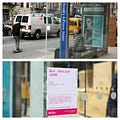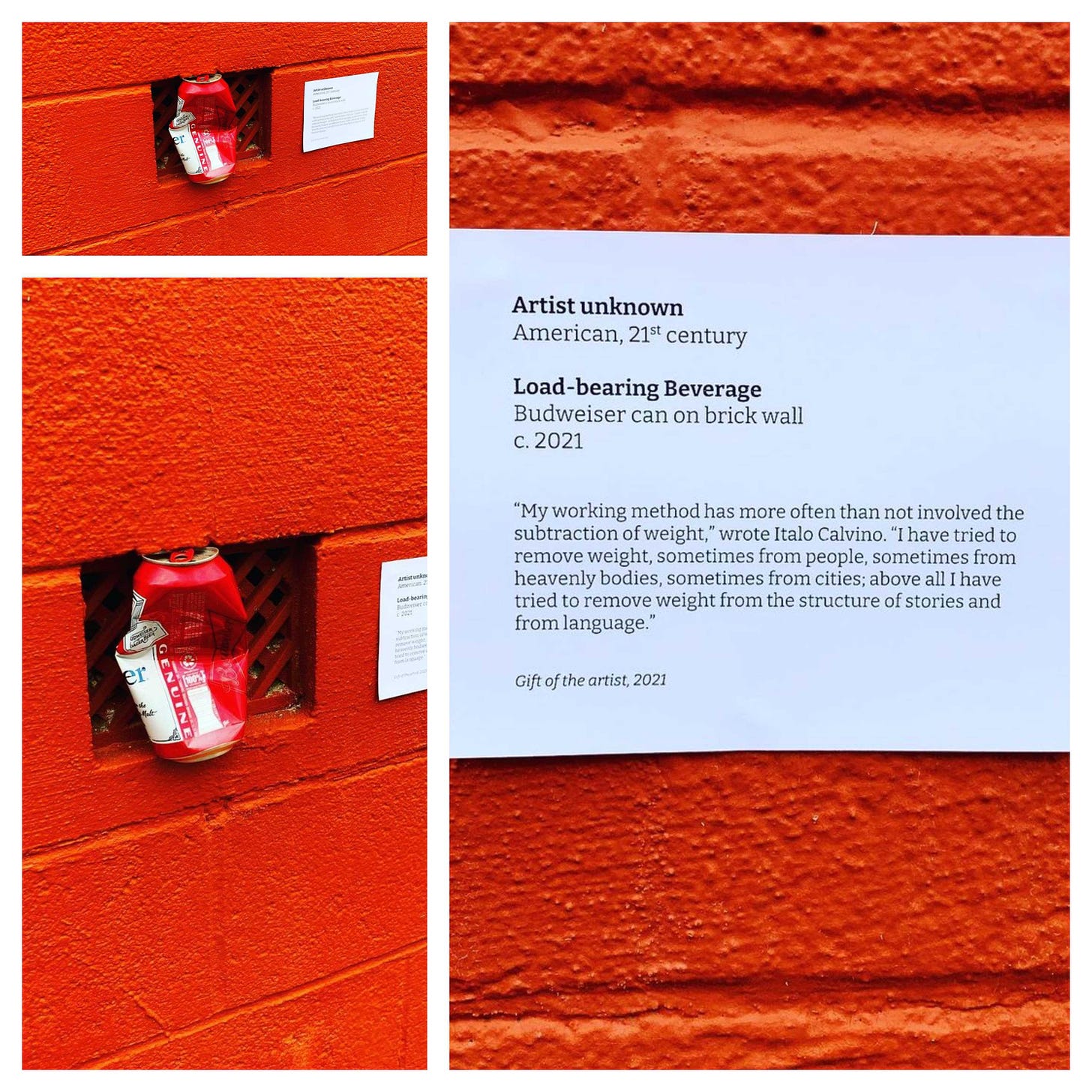The “make it art” game that TAoN has riffed on (in the book, as well as this post and this one and this one) took an expected turn recently. Friend of TAoN Austin Kleon, having previously declared a can picturesquely stuck in a wall to be art, took things one step further and made a museum label for it:
Keep reading with a 7-day free trial
Subscribe to The Art of Noticing to keep reading this post and get 7 days of free access to the full post archives.


